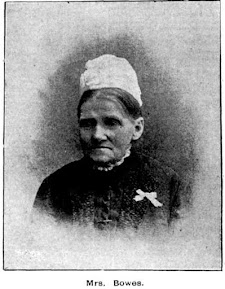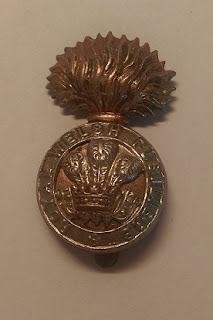A stonemason's life is fraught with danger
So many headstones throughout the Necropolis state "accidently killed" or similar words to that effect. We forget just how dangerous going to work to earn a "quid" in order to put food on the table was.
This week I have chosen two
instances of stonemasons who never made it home.
Thank goodness for OH&S!
- GEORGE WILLIAM KINDER
George was born in @1857 in
Lancashire, England to Henry, a stonemason and his wife, Mary. He was the third
son of eight children.
He followed in his father’s
footsteps training to be a stonemason and came to these shores alone in 1883 as
an assisted immigrant (meaning his passage was subsidised or paid for via one
of the several schemes in operation at the time.)
A few years later on the 23rd
of December 1886 George married Mary Anne Flynn in the Congregational Church in
the inner Sydney suburb of Glebe. The had two children in quick succession,
Alice and William, followed in 1889 by Henry and a young girl named Myee Helen
in January 1893.
On Saturday morning the 19th
of August 1893, George was employed as a stonemason’s labourer, working at St Philip’s Church in York Street
Sydney. Additions were being made to the tower and a large stone had been
hauled to the top of the tower, awaiting George to place it into position. As
he unloosed the guy-rope, George took a step downwards to another stone which
was projecting. It was at that moment that he lost his balance and fell 100 ft
(30+ metres) crashing onto some unworked stone on the ground. Death was almost instantaneous,
and he was conveyed to the North Sydney Morgue.
At an inquiry by the City Coroner held at the Croydon Hotel in George
Street North, evidence was given that George was accustomed to working at
height above ground and that when he fell nothing had given way to cause him to
lose his balance. The verdict was that George Kinder had died from injuries
accidently received.
George was buried the following day and lies alone in a grave in the old
Anglican Section of the Cemetery. His headstone is unique and shaped in the
form of a roof, mounted with a maul (hammer) with a copper handle attached. The
inscription states
Killed off St Philip’s Tower
Erected by his wife Annie
Mary Anne now found herself a widow with four young children. Her grief
would have been even more painful when her youngest child died in 1893.
She remarried William Gordon Brookman in Victoria and they went to Western
Australia to reside with her children until his death in 1910, seemingly having
a good life. More sorrow was to follow when in 1917, one of her brothers died
in Palestine closely followed by another brother in Melbourne. In 1918 her
mother died and during the 1920’s she lost many close family relatives
including her father. She, however, lived to the age of 95 passing away in
Casino in the north of NSW in 1963.
- JAMES
BUTTERWORTH
Not much is known of James, but we do know he was the son of Robert, a
stonemason, and his wife, Selina and born in Lancashire, England.
His story could very well mirror George Kinder’s as we know that by the
1870’s he was living in Sydney and working as a stonemason.
He married Elizabeth Newman in 1877 and they were soon blessed with a son,
Robert who tragically died the following year. They were blessed with another
son, James Jnr who was born that same year.
On the 14th of April 1879 James was working on a new house in Bellevue Hill. In the course of moving a heavy stone into its place on an iron hook some 20 feet up (60 metres), it slipped out of touch and fell on the plank scaffolding supporting James. The plank broke from the force of the blow and James fell heavily to the ground. He was taken to the nearest hospital by his fellow workers but died the next day from injuries to his spine. His death was deemed to be an accidental one.
He left Elizabeth a widow aged 20 years with a young baby.
His fellow workers erected a memorial over his grave in this honour and it
states –
“Stonemason. B.27 July 1854.
Died by accident.
T’was my misfortune laid me
here, go home dear friends, shed not a tear.
Think not of ills we can’t
prevent. I lost my life through accident.
Yet when Christ comes I hope
to have.
A joyful rising from the
grave.”
Erected by a few friends and
his fellow workmen.
Elizabeth later married James Dormer and went on to have five more
children. She died on the 15th April 1930 in Arncliffe some 51 years
to the day that his first husband had died.
It is very easy to pass by this memorial as it is located in section P of
the old Anglican section at the very end of the Serpentine Canal and although
close to a main path is in a very overgrown area. From the sheer beauty of this
memorial I expect James was held in high regard by his peers.
These two examples are just the tip of the iceberg in relation to stonemason
deaths!
These people operated at great heights with no safety equipment, often
just coming to work in a shirt and jacket with a pair of boots they wore day in
and day out. How so many of them escaped without harm is beyond me.
There are so many people who accidently drowned, had an incident with a
horse and/or died from accidents involving trams and trains but they will be
for another day.
If you have any personal stories of family stonemasons who defied gravity
or succumbed to their injuries please comment below or on the group Facebook
page which can be found under
Rookwood Cemetery Discoveries
Or send me a personal message via
Until next week.







Thank goodness for safer worksites ! George’s headstone is very interesting
ReplyDeleteAgreed! I really love a unique headstone - very befitting for a stonemason I think.
ReplyDelete